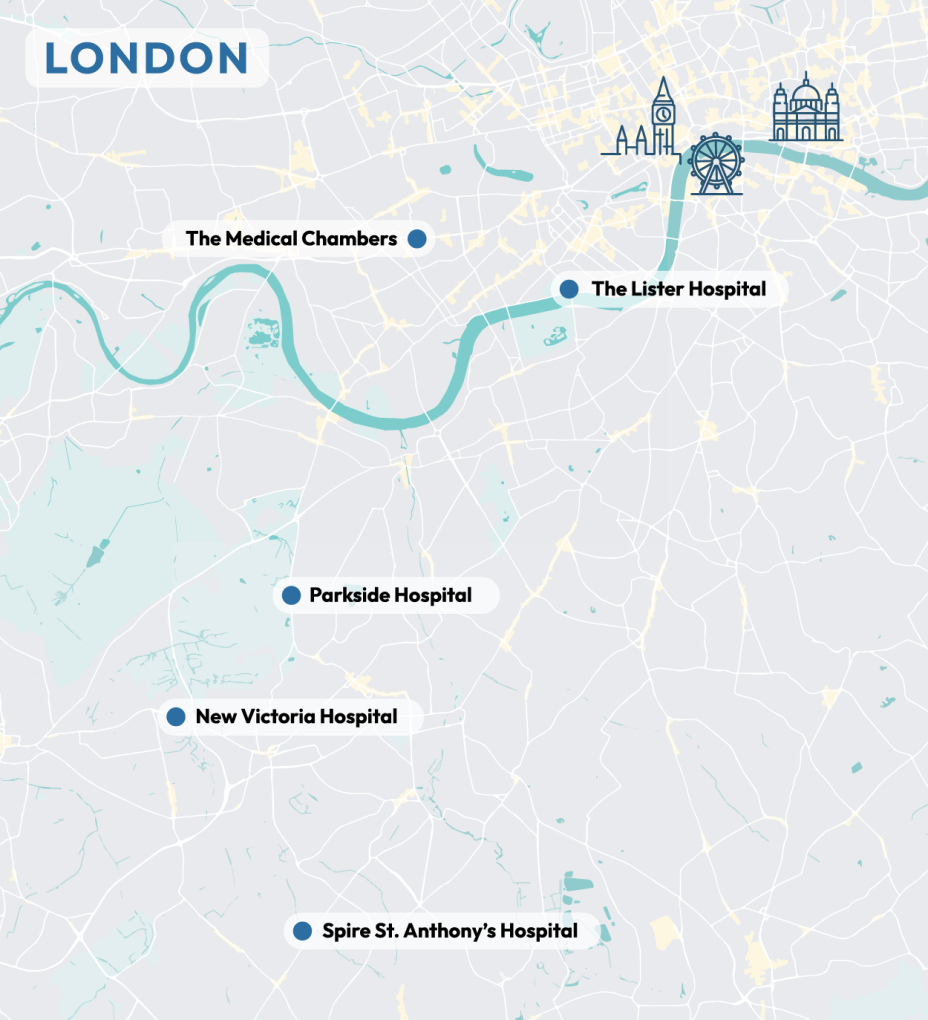Tens of thousands of women undergo hysterectomies annually across the UK, making this a relatively common procedure. It can dramatically improve a patient’s quality of life, easing or eliminating many symptoms affecting their reproductive system. However, it is a permanent and irreversible procedure, immediately ending a patient’s menstruation, as well as making it impossible for them to get pregnant.
What are the reasons for hysterectomy?
There are numerous reasons for a hysterectomy, including:
- Fibroids: Fibroids are non-cancerous growths or tumours that form within or around the uterus, sometimes causing pain, abnormal bleeding, and pressure symptoms. They can significantly impair the quality of life. Hysterectomy is not the first-line treatment for fibroids, but it is the treatment of choice in severe cases.
- Endometriosis: Endometriosis is a condition in which the lining of the womb-like tissue grows in other areas of the reproductive or other systems where it should not be. It can cause pelvic pain, heavy bleeding, bloating, subfertility and bowel or bladder dysfunction.
- Cancer: Multiple forms of cancer may impact the female reproductive system, such as endometrial, ovarian or cervical cancer. Very often, a hysterectomy is part of the treatment.
- Chronic Pain or Bleeding: Patients who suffer from recurring or heavy vaginal bleeding and/or pelvic pain may strongly benefit from a hysterectomy.
- Prolapse: Uterine prolapse occurs when the uterus slips down into the vaginal canal due to weakened pelvic support. It may cause pelvic pressure, urinary or bowel issues, and discomfort.
- Prevention: To prevent cancer or other serious health conditions from developing, particularly in high-risk individuals with a family history of such conditions.
What kinds of hysterectomy procedures exist?
As touched on earlier, there are several types of hysterectomy.
Total hysterectomy
This removes the uterus and cervix but leaves the ovaries in place. It is a common type of hysterectomy and does not immediately induce menopause.
Supracervical hysterectomy
This removes the uterus, without taking out the cervix. It is also sometimes referred to as a subtotal hysterectomy.
Total hysterectomy with bilateral salpingo-oophorectomy
One of the most comprehensive forms of hysterectomy, this removes not only the uterus but also the cervix, ovaries, and fallopian tubes.
Radical hysterectomy with bilateral salpingo-oophorectomy
This removes the uterus, cervix, fallopian tubes, ovaries, and the upper part of the vagina. Additionally, some sections of tissue and lymph nodes are also taken out. This is often employed to treat or prevent cancer.






